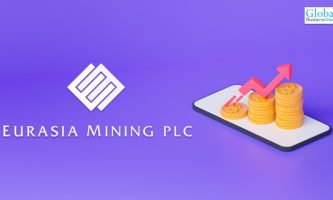Strategic Financing: Exploring Your Options With Truck Loans

Navigating the financing landscape can be challenging, especially when it comes to purchasing a truck. Many business owners may feel overwhelmed or uncertain of what financing options are available and how to get started.
That’s why we’re here to help explain your strategic financing opportunities with truck loans and provide you valuable tips on making informed decisions for ensuring a successful loan experience.
We’ll look at different loan products available such as commercial vehicle loans, asset finance, and conventional bank loans, so you can decide which option works best for you and your business.
With this information in hand, you’ll have everything you need to confidently navigate the world of strategic financing with truck loans.
The Basics Of Commercial Truck Loans
As you explore options for financing your commercial truck, it’s important to understand the basics of loans for trucks. Without a solid understanding of how these loans work, it can be difficult to know which option is best for your business.
Commercial truck loans offer a strategic financing option for companies looking to invest in transportation assets. These loans typically have longer terms and lower interest rates than traditional business loans, making it easier to manage cash flow and invest in growth.
By understanding the options for truck loans and exploring your financing strategy, you can achieve long-term success and build a strong, sustainable business.
Types Of Truck Loans Available
When it comes to financing your truck, there are various options available. Commercial vehicle loans, asset finance, and conventional bank loans are some of the most popular types of loans for trucks that are available for businesses of all sizes.
Commercial vehicle loans typically require less money down and offer flexible repayment terms, making them an attractive option for small businesses. On the other hand, asset finance allows you to use your truck as collateral for the loan, which can result in lower interest rates.
Conventional bank loans may offer competitive interest rates and longer repayment terms but require higher down payments and stricter credit requirements.
Deciding which type of loan is right for you will depend on your individual circumstances, which is why it’s important to do your research and seek professional advice when exploring your financing options.
Benefits Of Securing A Truck Loan
In the world of transportation and logistics, securing a truck loan is a crucial step towards growth and sustainability. Whether you’re a startup looking to establish your fleet or an established company expanding your operations, loans for trucks are essential to achieving your goals. That’s why exploring your financing options is a smart move.
The benefits of securing a truck loan include flexibility, lower interest rates, and an overall increase in your buying power. With these advantages, you can invest in new trucks, replace aging ones, or upgrade your current ones with the latest technology.
More importantly, you can take control of your cash flow and better manage your expenses so that you can focus on what matters most, running your business. So, if you’re looking for a strategic financing solution, it’s time to consider a truck loan – the key to unlocking your company’s full potential.
Important Factors To Consider Before Applying For A Loan
When it comes to securing a loan for a truck, there are a number of factors that must be considered before applying. Strategic financing is key to ensuring that you obtain the best loan possible for your needs and budget.
Understanding the various options available to you and carefully evaluating your financial situation are crucial steps in this process. Choosing the right lender, determining the type of loan that best fits your needs, and assessing your ability to make timely payments are all factors that must be taken into account.
By exploring your options and making an informed decision, you can establish a solid financial foundation for your trucking business and achieve long-term success.
How To Compare Rates & Offers When Shopping For A Loan
The process of comparing rates and offers might seem daunting at first, but with the right mindset and tools, it’s possible to secure the best possible financing for your company. Whether you’re purchasing a single truck or an entire fleet, it’s important to consider factors such as interest rates, repayment terms, and loan features when shopping around for loans.
By doing so, you can make informed decisions that ensure your business stays on track and reaches its goals. Don’t let financing be a barrier to your company’s growth. Instead, take the time to explore your options and make strategic decisions that will benefit you in the long run.
Tips For Making Your Loan Repayment Plan More Manageable
Once you’ve secured a loan, the real work begins – making your loan repayments manageable.
One way to do this is by staying on top of your budget and creating a repayment plan that fits your income and expenses.
It’s also important to communicate with your lender if you’re experiencing any financial difficulties, as they may be able to offer relief options or flexible repayment plans to help you stay on track.
By taking these steps, you can ensure that your truck loan doesn’t become a burden on your finances.
Read Also:













